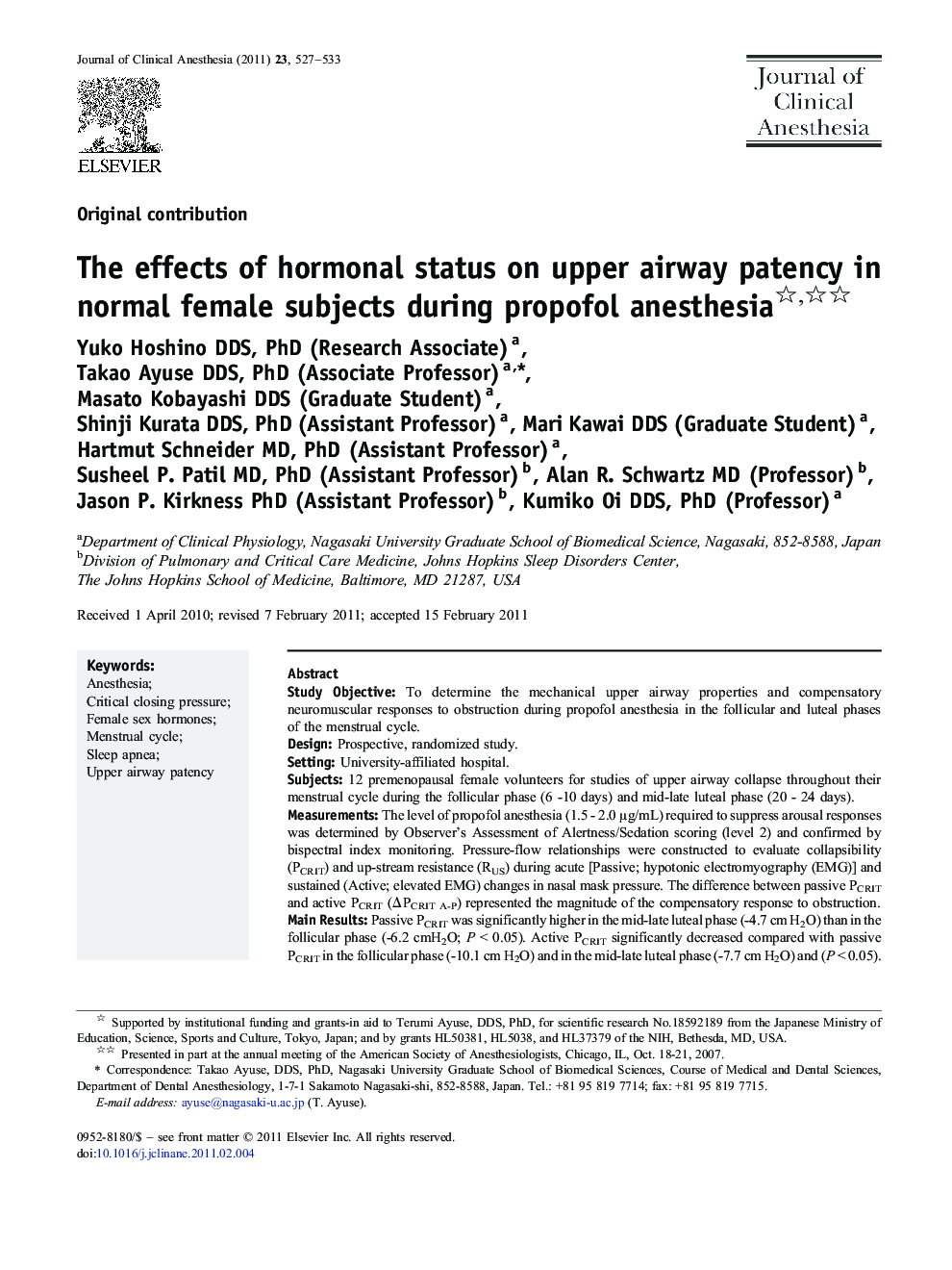| Article ID | Journal | Published Year | Pages | File Type |
|---|---|---|---|---|
| 2763227 | Journal of Clinical Anesthesia | 2011 | 7 Pages |
Study ObjectiveTo determine the mechanical upper airway properties and compensatory neuromuscular responses to obstruction during propofol anesthesia in the follicular and luteal phases of the menstrual cycle.DesignProspective, randomized study.SettingUniversity-affiliated hospital.Subjects12 premenopausal female volunteers for studies of upper airway collapse throughout their menstrual cycle during the follicular phase (6 -10 days) and mid-late luteal phase (20 - 24 days).MeasurementsThe level of propofol anesthesia (1.5 - 2.0 μg/mL) required to suppress arousal responses was determined by Observer's Assessment of Alertness/Sedation scoring (level 2) and confirmed by bispectral index monitoring. Pressure-flow relationships were constructed to evaluate collapsibility (PCRIT) and up-stream resistance (RUS) during acute [Passive; hypotonic electromyography (EMG)] and sustained (Active; elevated EMG) changes in nasal mask pressure. The difference between passive PCRIT and active PCRIT (ΔPCRIT A-P) represented the magnitude of the compensatory response to obstruction.Main ResultsPassive PCRIT was significantly higher in the mid-late luteal phase (-4.7 cm H2O) than in the follicular phase (-6.2 cmH2O; P < 0.05). Active PCRIT significantly decreased compared with passive PCRIT in the follicular phase (-10.1 cm H2O) and in the mid-late luteal phase (-7.7 cm H2O) and (P < 0.05). No significant difference was noted in ΔPCRIT between the follicular (3.9 ± 2.9 cm H2O) and mid-late luteal phases (3.0 ± 2.6 cm H2O). No differences were seen in RUS between the menstrual phases for either the passive (P = 0.8) or active (P = 0.75) states.ConclusionsMenstrual phase has an effect on anatomical alterations (mechanical properties) in the hypotonic upper airway during propofol anesthesia.
